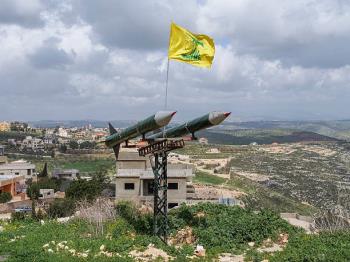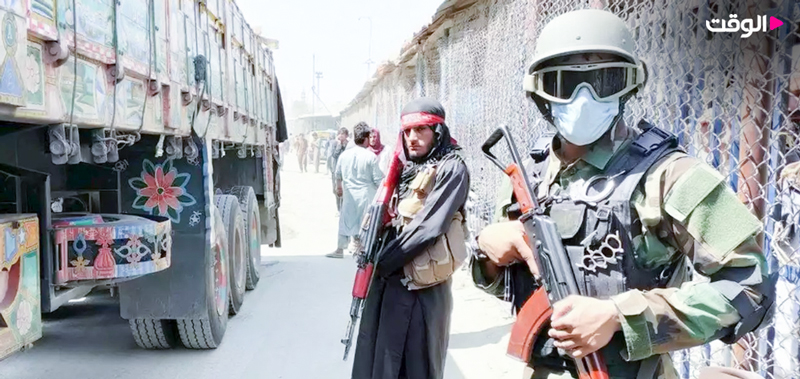Alwaght- During a recent visit of a Pakistani delegation to Afghanistan and meeting with the Taliban officials, the two sides reportedly agreed to settle their border disputes.
The Pakistani delegation was headed by National Security Adviser Moeed Yusuf and during the talks, they reportedly agreed to form a committee to defuse the border tensions. The delegation also included Mohammed Sadegh, Pakistan's special envoy to Afghanistan, and representatives from various ministries.
"The purpose of the Pakistani delegation's two-day visit to Kabul is to discuss with the Afghan leadership the humanitarian situation in that country and present Pakistan's recommendations for deepening economic partnership and assisting Afghanistan in facing the challenges", read a statement published by Pakistan's ministry 0f information.
During his visit to Kabul, Moeed Yusuf met with Taliban Foreign Minister Mowlawi Amir Khan Mottaqi, Taliban Deputy Prime Minister Mowlawi Salam Hanafi, and a number of other key Taliban members, and the two sides agreed on economic exchanges and partnership, according to the statement.
The Pakistani delegation and Taliban officials also agreed to facilitate trade between the two countries at border crossings and official customs, and to increase trade volume. The Pakistani delegation promised the Taliban that the Pakistani government was willing to provide training opportunities for Afghans in the areas of health, banking, customs, railways, telecommunications, and aviation.
Pakistan-Taliban border dispute
In late December 2021, the Taliban claimed to have prevented Pakistani forces from fencing off the border with Afghanistan. Footage released from the Pakistan-Afghanistan border in Kunar and Nimroz provinces showed the Taliban trying to block a fencing work of Pakistani troops. Sporadic skirmishes followed the tensions but no casualties were reported.
As the tensions unfolded, Pakistan's Interior Minister Sheikh Rasheed Ahmad, at a news conference in Islamabad said that the fencing along Pakistan-Afghanistan border would be completed according to an agreement with the Taliban and it has already progressed 94 percent.
However, differences between the two over the border remain. Over a century ago, in 1893, the borders of Pakistan, or East India under the British colonization, with Afghanistan were drawn by the representatives of British government, but so far no government or group in Afghanistan has officially recognized this demarcation.
In 1893, during the reign of Amir Abdul Rahman Khan in Afghanistan, a border treaty was signed between Sir Henry Mortimer Durand, the representative of British-occupied India, and Afghanistan.
After Abdul Rahman's rule, almost all Afghan rulers opposed the demarcation line, and to this day no government in Afghanistan has officially recognized this border. During the presidencies of Hamid Karzai and then Ashraf Ghani, according to the agreements, Pakistan, with the support of the UN and the US and under the pretext of controlling the borders and countering the movement of terrorists, fenced most of the border and set up stations for passport checks. Although the government of Pakistan and the international community, except India, recognize the Durand Line, Kabul remains far from accepting this border.
According to Afghan documents, the Durand Line separates much of the country from its homeland. Afghan leaders believe the line separates Pashtuns and Baluchis who have family bonds. This 2430-kilometer-long border line also separated Pashtuns living in the west, namely in Pakistan, from Pashtuns living in the east, namely Afghanistan. The separation of the Pashtun tribes is a source of discontentment given their common tribal identity and their intensive contacts and visits. Until a few years ago, Pashtun tribes were living in the autonomous regions between Afghanistan and Pakistan, but for several years now, the Pakistani government has effectively toughened, and in some areas cut off, their communications by building border walls.
The tribes on both sides of the border, especially the Pashtuns, have had some form of tribal and autonomous rule for years, but the central government of Pakistan is trying to cut their power and authority. The construction of border fences and traffic control in the region effectively enables the Pakistani government to exert central government power.
The Taliban, most of whom are from different Pashtun ethnic groups, are also trying to unite the Pashtun tribes on both sides of the border, ignoring the Durand Line, so that in the long run, the idea of a Greater Pashtunistan can be implemented. By removing or ignoring the Durand Line, some 30 million Pakistani Pashtuns could be added to the Afghan population, which would greatly increase the ethnic population in Afghanistan, making it easier to rename Afghanistan to Pashtunistan.
Over the past hundred years, when the borders of East India and modern Pakistan have been drawn with Afghanistan, the forces of the two countries have clashed on the Durand Line under various pretexts, and these events are still not far-fetched given the region's tribal and geographical location.
Border disputes from political viewpoint
Over the past few months that skirmishes took place on the border, the two sides have insisted on their positions, but one fact cannot be overlooked: both the Taliban and Pakistan may not be reluctant to portrait themselves involved in the dispute over Durand Line.
The dispute paints the Taliban, which came to power a few months ago, of independent stances and policy. The group is accused of dependence on Pakistani by its opposition and the border dispute can help it flex its muscles as an independent actor.
Pakistan is unwilling to paint the Taliban a group dependent on Islamabad, despite the undeniable sway over the Taliban leadership. Twenty days after the Taliban took over the power in Kabul, Pakistan's intelligence chief made a visit to Kabul. Faiz Hamid was "happy and laughing and feeling accomplished" at Serena hotel of the Afghan capital. The Inter-Services Intelligence (ISI) chief bragged about his meeting with the Taliban leaders to the journalists. But he was dismissed soon after his return to Pakistan, giving place to General Nadeem Ahmad Anjum. The ISI chief is one of the most powerful posts in the Pakistani military structure. He has the word not only in the military affairs but also in the politics. The ISI has repeatedly been accused by previous Afghan government and Western officials of massive support to the Taliban and Haqqani Network, an affiliate of the Taliban with moderate stances. Pakistan has repeatedly rejected the accusations and the new ISI chief rarely makes public comments on Afghanistan. So, Pakistan uses the border dispute to demonstrate the Taliban independent of Islamabad.
With Durand Line being the separation line of Pakistan Pashtuns from their relatives in Afghanistan, the best option is keeping the dispute and separation of this ethnic group in place for a departure from the Greater Pashtunistan idea. Pakistan's push for border posts, thus, serves its security goal of countering Pashtun people's secessionism.



























